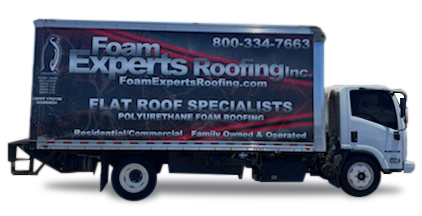Choosing the right roofing for a flat roof is key, considering the weather. Flat roofs can work well in hot weather if you pick the right materials and maintain them well. The best options depend on the building’s location and use.
Flat roofs need to be replaced every 10 years, unlike sloped roofs which can last up to 20 years with good care. This makes us wonder if flat roofs are good for hot weather. We’ll look at the good and bad sides of flat roofs in hot weather. We’ll also talk about the best materials and practices for them, including cool roofs and energy-saving options.
Key Takeaways
- Flat roofs require replacement every 10 years, while sloped roofs can last 20 or more years with proper care.
- Energy efficiency of flat roofs helps manage home utility costs, particular in warmer climates.
- Cool roofs can reduce energy bills by hundreds of dollars annually.
- Flat roofs can result in lower construction and repair costs due to reduced material usage compared to sloped roofs.
- The U.S. Department of Energy defines a cool roof as one designed to reflect more sunlight and absorb less heat compared to a standard roof.
- Metal roofs can last three times longer than traditional asphalt roofs when correctly installed, making them a good option for flat roofs.
- Roofing materials like concrete tiles can mimic various roofing styles while reflecting significant amounts of solar energy, making them a suitable choice for flat roofs in hot weather.
Understanding Flat Roofs in Hot Climate Conditions
Flat roofs in hot climates need special care. The right materials can greatly improve a building’s thermal performance. Materials like single-ply PVC and EPDM handle temperature changes well. In contrast, felt is more prone to damage.
Choosing the right flat roof type is key in hot climates. Metal roofs are great because they reflect heat, saving energy. But, concrete roofs absorb heat during the day and release it at night, making indoor temperatures warmer.
Heat Absorption and Reflection Properties
When picking flat roof materials, think about heat absorption and reflection. Materials like metal and clay tile reflect heat well. Others, like concrete and felt, might need extra coatings to reflect heat better.
Temperature Impact on Different Flat Roof Structures
Temperature affects flat roofs differently. Flat roofs without proper slopes can collect water, damaging the roof and building. But, roofs with the right slopes and drainage systems can prevent this.
Thermal Performance Factors
Insulation and ventilation are key for a flat roof’s performance. Good insulation keeps heat out and prevents ice dams. Ventilation helps remove heat and moisture from the roof.
Important factors for a flat roof’s thermal performance include:
- Material selection: The right materials are essential.
- Insulation: It helps keep heat out and prevents ice dams.
- Ventilation: It removes heat and moisture.
- Drainage: Proper systems prevent water accumulation.
Best Flat Roof Materials for Hot Weather Performance
Choosing the right flat roof for hot weather involves several key factors. The best materials should handle extreme temperatures well. They should also absorb less heat and keep water out. EPDM and modified bitumen are top choices for their durability and lasting performance.
These materials are great because they can handle tough weather, bend without breaking, and resist cracks. For example, EPDM roofs can last up to 50 years with the right care. Modified bitumen roofs have a multi-layer design to face extreme weather. PVC and Built-Up Roofing (BUR) also offer good insulation, saving on energy costs and keeping water out.
- EPDM: durable and long-lasting, with a lifespan of up to 50 years
- Modified Bitumen: flexible and resistant to cracking and splitting, with a lifespan of up to 20-30 years
- PVC: provides excellent insulation, reducing energy costs, and has a lifespan of up to 30 years
- BUR: offers good insulation, contributing to reduced energy costs, and has a lifespan of up to 20-30 years
It’s also important to install and maintain the roof correctly. Regular checks, fixes, and coatings can make the roof last longer. This prevents damage from debris and plants. By picking the right materials and following care tips, you can have a durable and lasting roof. This makes investing in the best flat roof systems a smart choice.
Flat Roof Materials
When it comes to flat roof materials, there are several options available. Each material has its own advantages and considerations. Let’s explore some of the most popular flat roof materials:
1. Asphalt Shingles
Asphalt shingles are a popular choice for flat roofs. They are affordable, easy to install, and come in a variety of colors and styles. Asphalt shingles are also known for their durability and ability to withstand harsh weather conditions.
2. Metal Roofing
Metal roofing is a great option for flat roofs. It is known for its longevity and ability to withstand extreme weather conditions. Metal roofing is also energy-efficient, helping to reduce energy costs. It comes in various styles, including corrugated, standing seam, and metal shingles.
3. Clay Tiles
Clay tiles are a popular choice for flat roofs in warm climates. They are known for their durability and ability to withstand high temperatures. Clay tiles are also aesthetically pleasing, adding a touch of elegance to any roof.
4. Slate Tiles
Slate tiles are a premium option for flat roofs. They are known for their exceptional durability and ability to withstand extreme weather conditions. Slate tiles are also known for their unique appearance, adding a touch of sophistication to any roof.
5. Rubber Roofing
Rubber roofing is a popular choice for flat roofs. It is known for its flexibility and ability to withstand harsh weather conditions. Rubber roofing is also energy-efficient, helping to reduce energy costs. It comes in various styles, including rubber shingles and rubber membranes.
6. PVC Roofing
PVC roofing is a popular choice for flat roofs. It is known for its durability and ability to withstand harsh weather conditions. PVC roofing is also energy-efficient, helping to reduce energy costs. It comes in various styles, including PVC shingles and PVC membranes.
7. TPO Roofing
TPO roofing is a popular choice for flat roofs. It is known for its durability and ability to withstand harsh weather conditions. TPO roofing is also energy-efficient, helping to reduce energy costs. It comes in various styles, including TPO shingles and TPO membranes.
8. EPDM Roofing
EPDM roofing is a popular choice for flat roofs. It is known for its durability and ability to withstand harsh weather conditions. EPDM roofing is also energy-efficient, helping to reduce energy costs. It comes in various styles, including EPDM shingles and EPDM membranes.
When choosing the best roofing option for your flat roof, it’s important to consider factors such as durability, energy efficiency, and aesthetics. Consulting with a professional roofing contractor can help you determine the best flat roof material for your specific needs and budget.















